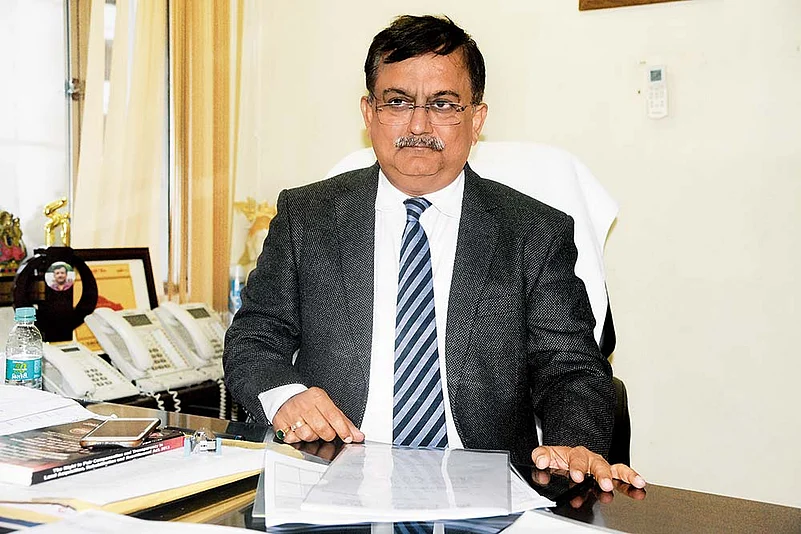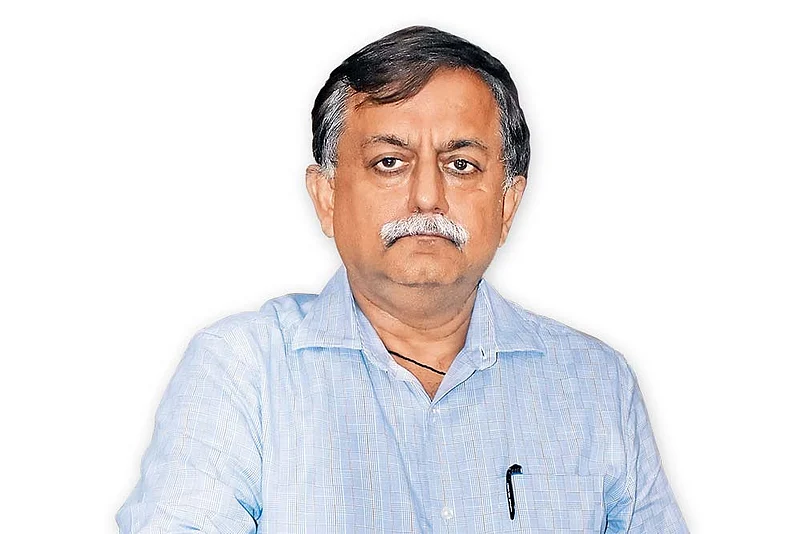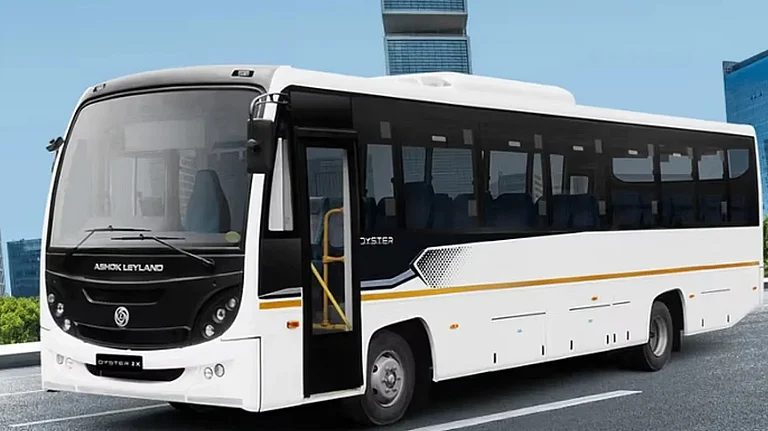With a goal of becoming a $1 trillion economy by 2027, Chief Minister Yogi Adityanath-led Uttar Pradesh government has a big task at hand. However, Awanish Awasthi, additional chief secretary, home department, exudes nothing but confidence. While speaking with Outlook Business, Awasthi, who holds additional charges as power secretary and CEO of the Uttar Pradesh Expressways Industrial Development Authority, elaborates on how the state has drawn up a firm blueprint to reach the target in the next five years. Edited excerpts:
Uttar Pradesh has six operational expressways and seven are under construction. How are you managing land acquisition for such large-scale infrastructure development without any protest?
Ninety-five per cent of land comes from negotiations. We have a team within the expressway authority, which includes sub-divisional magistrates, tehsildars and revenue officials, to get the right picture. We should pay the right farmer—on time and directly through real-time gross settlement.
For the Purvanchal Expressway, there is not a single location where we have not paid farmers. There is not a single farmer who has given an application [saying] that they are not being paid. So, there is zero litigation. We have made the expressway plan such that very few houses are acquired. In case they are acquired, we pay for the construction of the house at a different location. A clincher is that we pay four times the circle rate. In fact, these days, we get applications from farmers [asking us] to acquire their land.
We acquired land for the Bundelkhand Expressway in four to five months and have field functionaries to address farmers’ concerns. We have now bought land for the Ganga Expressway, and even there, the process has been seamless with 95% of the land being acquired. So, across the state, we have no problems related to land acquisition.
An emerging expert view suggests that Indian roads and highways are empty. Are we not overbuilding roads and expressways?
The Yogi government has already set a target of a $1 trillion economy. How can we do that without infrastructure? On a road such as the Purvanchal Expressway, we have already got 12% of the money back through taxes. Building roads means that we are providing employment.
In the US, roads were built to connect the north with the south and the east with the west. This brought areas from the Midwest into farming. In Ghazipur, several areas used to produce vegetables and supply them to areas such as Varanasi. Today, because of the Purvanchal Expressway, farmers have access to the wholesale markets in Delhi.
The expressways are significantly reducing the time taken for freight movement. The logistics department of large companies are realising the benefits of the connectivity that we are creating through expressways.

Photo: Tribhuvan Tiwari
What is the roadmap for achieving the $1 trillion goal?
Uttar Pradesh’s $1 trillion economy will be achieved through various pillars. One of them is good roads, including expressways. The road and expressway network should be elaborate enough to connect to every tehsil and village.
The power sector has to be boosted to ensure affordable 24-hour electricity. Uttar Pradesh has moved fast in the last six years to improve the power situation. As power secretary, I can say that during the harsh summer this year, Uttar Pradesh was better off than many other states.
Third is improvement in the quality of healthcare. Uttar Pradesh already has the largest number of health cards among states. There were only 13 to 14 medical colleges, but now, every district will have one college. At the last count, more than 35 to 36 medical colleges were being built. The health infrastructure at the block and tehsil levels needs to be strengthened and the chief minister is personally focused on it. In fact, his focus has ensured the eradication of Japanese encephalitis.
The fourth focus area is education, both at the secondary and higher levels. A large number of universities have been established in districts such as Azamgarh, Saharanpur, etc., which did not have one. The quality of secondary education has improved. For decades, there was a problem of mass copying during exams in the state, which is now a thing of the past. For basic education, the Kayakalp scheme has been introduced, in which schools are adopted by various agencies to ensure quality education.
The basic challenge was that of law and order, but we have fixed it. In this area, there has been a paradigm shift and we can proudly say, “Where else will you see the rule of law if not in Uttar Pradesh?”
Law and order is crucial for attracting investment. How are you taking care of that?
We have the largest police force in the world. If it ensures fair play with the message that criminal activities will not be tolerated, we have done our job. In the past few years, properties worth Rs 3,200 crore belonging to criminals have been confiscated.
Law and order is a 24-hour job, and there will be incidents that will happen, but we are ensuring a large number of convictions. We are using technology to improve law and order and have the best e-prosecution process in the country. We are reforming our prisons and the judiciary is also improving as far as timeliness is concerned. On August 13, under the supervision of the high court, the Lok Adalat resolved 50 lakh cases in a day. Settlements of over Rs 1,000 crore have been done.
So, if we provide a good judicial system and policing and ensure positive district administration, there is no reason why the rule of law cannot be complied with.
Is there a long-term plan to ensure that the youth do not take to crime?
The rate of crimes related to murder, rape and dacoity has halved and, in some cases, become one-third of the pre-2017 numbers. The challenge before us is social media. With reaction time reducing due to social media, law enforcement agencies will have to be equipped to match that speed. Another challenge before us is employment generation and movement of people.
We are introducing family cards now to ensure all our schemes reach every family. These cards will digitise the process and aid monitoring of our schemes. There is not and cannot be any destabilising factor in Uttar Pradesh which derails us from our target of $1 trillion economy.


























